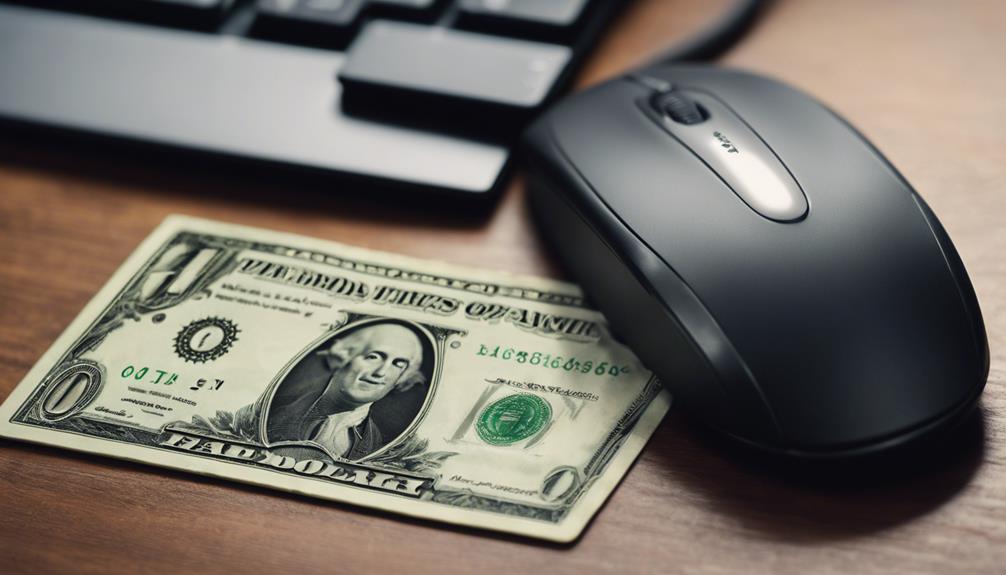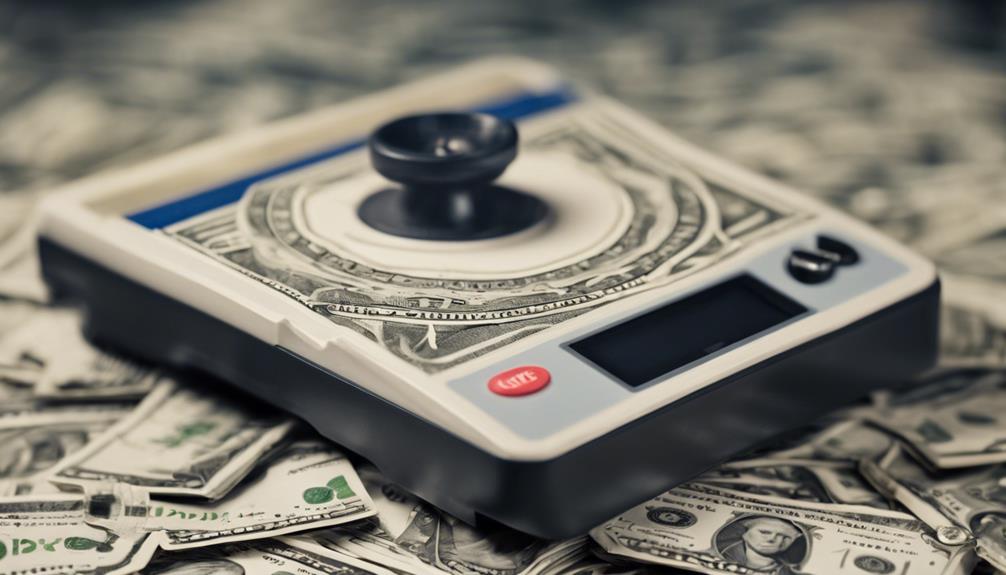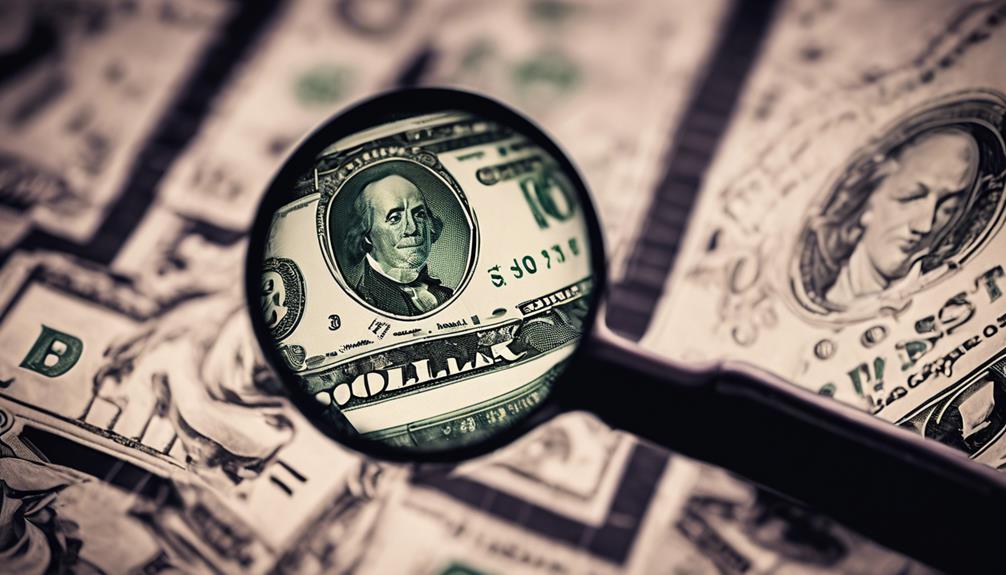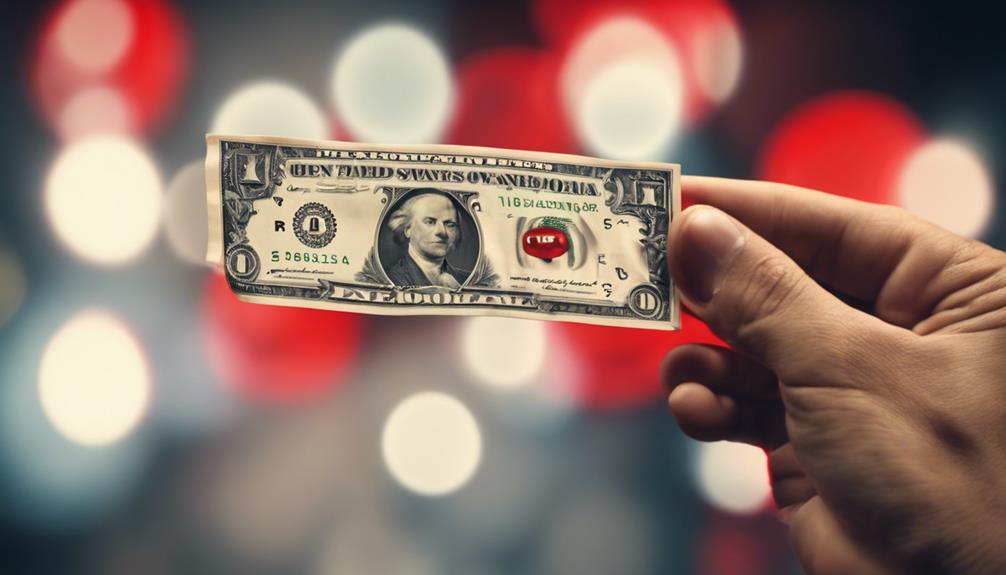
How many likes for $1 dollar on Facebook?
‘Let’s say you’ve invested $100 in a Facebook ad campaign with the goal of gaining more page likes. After a week, you’re surprised to find that you’ve only netted 70 new likes. That’s more than a dollar spent on each like; a steep price, isn’t it?
You might be wondering, ‘Is there a way to gain more likes for less?’ Well, the answer isn’t as straightforward as you might think, but I assure you, it’s an exploration worth your while.’
Key Takeaways
- The number of ‘Likes’ per dollar on Facebook depends on ad content quality, targeting precision, and bid strategy.
- Greater engagement can lower ad costs, potentially increasing ‘Likes’ for each dollar spent.
- Personalized targeting using ‘Likes’ may enhance ad performance, affecting the ‘Likes’ per dollar ratio.
- The impact of ‘Likes’ per dollar varies with campaign objectives, audience preferences, and cost dynamics.
Understanding Facebook Advertising

Diving into the intricate world of Facebook advertising, you’ll quickly discover its potential as a powerful tool in your marketing arsenal, capable of tailoring your reach to a highly specific audience for just a fraction of a dollar. The platform’s ad targeting strategies are a game-changer, allowing you to pinpoint your ideal customer with striking accuracy.
Consider demographic details such as age, gender, location, interests, and even relationship status. These aren’t just random data points; they’re the building blocks of your customer profile, the key to crafting a message that resonates and prompts action.
But don’t stop at demographics. Delve deeper with psychographic data, like values, attitudes, and lifestyle. It’s here you’ll find the emotional triggers that motivate buying decisions.
Facebook’s algorithm is an innovation marvel, capable of delivering your ads to those most likely to respond favorably. It learns from each interaction, refining its predictions and increasing your return on investment.
In essence, it’s about understanding your audience, crafting a compelling message, and letting Facebook’s advanced targeting do the heavy lifting. Grasp these principles, and you’re well on your way to maximizing the power of Facebook advertising.
Cost of Facebook Ads: A Breakdown
Now, let’s break down the cost of Facebook ads to see what you’re really paying for. Your cost isn’t just a simple dollar amount, it’s a complex interplay of ad auction dynamics and ad content creativity.
- Ad auction dynamics: Facebook operates on an ad auction system. You’re competing with other advertisers who are targeting the same audience. Your bid, the estimated action rates, and ad quality will decide the outcome of the auction. So, the more competitive your bid and the higher your ad quality, the better your chances of winning the auction.
- Ad content creativity: The creativity of your ad content plays a significant role in its overall performance. A well-crafted ad can catch the user’s attention, and increase the probability of engagement, which in turn can lower your overall ad cost.
Factors Influencing Facebook Ad Costs

Understanding the factors that influence Facebook ad costs can empower you to optimize your budget and maximize your returns. Two key aspects that significantly sway these costs are ‘Ad targeting techniques’ and ‘Bid strategy insights’.
Ad targeting techniques involve demographic, location, and behavioral data. The more specific you get with your audience, the more competition there is for ad space, and thus, the higher the cost. On the other hand, bid strategy insights are about understanding how much you’re willing to pay for your ad to reach people. If you bid low, you’ll save money, but your ad might not get the exposure it needs.
To give you a clearer picture, here’s a table illustrating these concepts:
| Factor | Effect on Cost |
|---|---|
| Specific Ad Targeting | Increases cost due to higher competition |
| Low Bid Strategy | Decreases cost but limits ad exposure |
Innovative thinking in these areas can help you strike the perfect balance between cost and effectiveness. Keep in mind that these factors are not the end-all-be-all. There are many more variables at play, which you’ll need to consider to make your Facebook ad campaign a success.
The Real Value of a Like
You’ve seen how ad costs vary, but let’s now explore what a ‘like’ on Facebook truly means. Consider the ‘like’ metrics and its relevance in the vast social media economy.
Like Metrics and Relevance
Diving into the metrics, it’s essential to grasp the true value of a ‘Like’ on Facebook, as it goes far beyond a mere numerical value or popularity measure. ‘Like’ authenticity and understanding Facebook’s algorithms play a pivotal role in deciphering this metric’s worth.
- It’s about engagement: A ‘Like’ indicates a user’s interest level and potential for future interaction.
- It’s a trust signal: Authentic ‘Likes’ from real users speak volumes about your brand’s credibility.
- It affects discoverability: Facebook’s algorithms use ‘Likes’ as a factor in determining your content’s visibility.
- It’s a feedback tool: ‘Likes’ provide insight into what resonates with your audience, guiding future strategies.
Social Media Economy
In the vast landscape of social media, a single ‘Like’ carries more weight than first meets the eye, serving as a valuable currency in the digital economy. It’s not just about popularity; a ‘Like’ signifies engagement, interest, and potential for further interaction.
It’s a vital cog in the machine of influencer collaborations and viral content creation. Each ‘Like’ you give or receive represents a small, yet significant, investment in this digital marketplace. It’s a public endorsement, a signal to algorithms that boosts visibility and reach.
In the age of data-driven marketing, your ‘Likes’ are part of an intricate exchange system, a bustling social media economy where every interaction has a tangible value, one that’s constantly evolving and redefining the digital landscape.
Advertising Through Likes
As we navigate this online marketplace, it’s essential to understand the profound impact of a single ‘Like’ in advertising strategies. A ‘Like’ isn’t just a social affirmation, it’s a tool for personalized targeting and organic growth.
With ‘Likes’, you can:
- Generate user-specific content to enhance customer loyalty.
- Foster organic growth by creating a sense of community.
- Leverage ‘Likes’ for personalized targeting, providing a curated shopping experience.
- Use this data to anticipate future trends and consumer behavior.
Each ‘Like’ is a breadcrumb in the digital landscape, leading you closer to your audience’s preferences. By understanding the nuanced value of a ‘Like’, you can harness its power to drive your advertising strategies forward.
Setting a Budget for Facebook Ads
To make the most out of your Facebook ads, it’s crucial to set a budget that not only suits your financial capacity but also optimizes your campaign’s reach and effectiveness. The first step is Ad Budget Allocation, where you’ll need to consider factors like the duration of your campaign, the cost per click or view, and the desired outcome.
Target Audience Selection is another essential aspect you’ll need to factor in while setting your budget. It’s not about reaching the most people, but reaching the right people. Your budget should reflect the value of your target audience. Are they likely to engage with your ad? Will they convert into customers?
Consider this table for a better understanding:
| Low Budget | High Budget | |
|---|---|---|
| High Quality Audience | Low Reach, High Engagement | High Reach, High Engagement |
| Low Quality Audience | High Reach, Low Engagement | Waste of Money |
With a low budget, you can still achieve high engagement by targeting a high-quality audience. On the other hand, a high budget spent on a low-quality audience is simply a waste of resources. Your ad budget allocation and target audience selection should work hand-in-hand, ensuring the best possible return on your investment.
Optimizing Ad Spend for Engagement

You’re now ready to fine-tune your ad spending for optimal engagement.
It’s not just about spending, it’s about maximizing efficiency, driving engagement with carefully crafted ads, and ensuring cost-effectiveness per like.
Let’s explore practical strategies for getting the most out of every dollar you invest in Facebook advertising.
Maximizing Ad Spend Efficiency
When it comes to getting the most bang for your buck in Facebook advertising, maximizing ad spend efficiency isn’t just about playing around with numbers, it’s a strategic approach that involves optimizing your ad for engagement. To achieve this, you must be savvy in your Ad Spend Allocation and meticulous in your Target Audience Identification.
Consider these key aspects:
- Identify your target audience: Understand who you want to reach. Use demographic data to refine your audience and maximize the impact of your ads.
- Allocate your ad spend wisely: Distribute your budget based on the potential reach and engagement of each ad.
- Test different ad formats: Experiment with various ad types to see which resonate most with your audience.
- Monitor and adjust: Regularly review your ad performance and adjust your strategies accordingly.
Driving Engagement With Ads
Now that you’re equipped with strategies for efficient ad spend, let’s focus on how to drive engagement with your ads, essentially optimizing your ad spend for maximum interaction.
Your secret weapons here are Engagement Algorithms and Ad Creativity. Algorithms, like Facebook’s, prioritize engaging content. So, your ads need to be more than just visually appealing—they need to resonate with your audience, prompting likes, comments, and shares.
This calls for a boost in your ad creativity. Inventive, authentic, and relevant content can ramp up engagement. Think interactive polls, captivating visuals, compelling storytelling. Also, consider your timing and frequency. Regular, well-timed ads can keep your brand fresh in users’ minds. Fine-tune these elements and watch your engagement metrics soar.
Cost-Efficiency for Likes
Understanding the cost-efficiency of each like on Facebook is essential in optimizing your ad spend for maximum engagement. You can’t entirely rely on ‘Like Farming’ due to the dangers it presents such as attracting low-quality followers or even bots. Instead, focus on boosting organic engagement.
Consider these strategies:
- Engage with your audience regularly. Respond to comments and messages promptly.
- Create high-quality, relevant content that resonates with your audience.
- Utilize Facebook’s algorithm by posting when your audience is most active.
- Run targeted ads to reach potential customers based on their interests and behaviors.
Case Study: Real-Life Cost Analysis

Let’s dive into a practical case study to analyze the real-life cost of acquiring Facebook likes for your business. Imagine you run a small online store. You’ve set aside $100 for Facebook advertising, aiming to increase your page likes and boost your brand visibility.
Your first step? Ad effectiveness evaluation. You need to understand how your ad budget translates into page likes. Say, after a week, your $100 yields 250 new likes. That’s a cost-per-like of $0.40.
Now, let’s delve into target audience insights. You find that most likes come from people aged 18-24. This demographic may be more receptive to your ads, clicking ‘like’ more readily than other age groups. So, the cost-per-like in this group could be lower, suggesting that targeting your ads towards them could yield more likes per dollar spent.
This case study shows that the real-life cost of Facebook likes isn’t just about the money spent. It’s about understanding ad effectiveness and your target audience to optimize your spending. Remember, your goal isn’t merely acquiring likes, but transforming those likes into tangible business results.
Strategies to Increase Likes on a Budget
Having grasped the cost-per-like concept and the importance of knowing your audience, it’s crucial to explore effective strategies to maximize your Facebook likes without breaking the bank. Engaging with your audience organically and forming affordable influencer partnerships are two prime examples of such strategies.
To ensure you’re getting the most out of your budget, consider these strategies:
- Organic Engagement Tactics: Regularly posting engaging content that resonates with your audience, responding to comments, and creating interactive polls or quizzes can drive likes upwards. This approach not only boosts your engagement rate but also enhances your brand’s authenticity.
- Affordable Influencer Partnerships: Collaborating with influencers who align with your brand can expose you to a broader audience without a hefty price tag. Micro-influencers often have dedicated followers who trust their recommendations, making them valuable partners.
- User-Generated Content: Encourage your followers to share their experiences with your product or service. This builds community and can result in organic likes.
- Facebook Groups: Engage in relevant groups where your potential customers hang out. Share valuable content and insights, subtly promoting your brand.
Mistakes to Avoid in Facebook Advertising

Despite your best efforts in Facebook advertising, certain pitfalls can undercut your campaign’s effectiveness and waste your budget. One common error is failing to use Ad Avoidance Tactics. While it’s important to reach a wide audience, you must also ensure that your ads aren’t seen as intrusive or annoying. This can be achieved by using subtle ad placements and avoiding excessive repetition.
The second blunder isn’t conducting an Unsuccessful Campaign Analysis. If a campaign didn’t meet expectations, it’s crucial to examine why. Perhaps your target demographics were off, or your ad copy didn’t resonate. By analyzing unsuccessful campaigns, you can glean valuable insights to avoid repeating the same mistakes.
Measuring the Success of Facebook Ads
After avoiding these pitfalls in Facebook advertising, it’s crucial to assess the impact of your ads, and this is where measuring the success of your Facebook ads comes into play. You need to look beyond the surface-level metrics like likes or shares. Instead, focus on the metrics that truly reflect the effectiveness of your ad creative strategies and audience targeting techniques.
To measure your success:
- Evaluate the Click-Through-Rate (CTR): It shows how compelling your ad is to your audience.
- Assess the Conversion Rate: It suggests whether your ad is driving desired actions.
- Analyze the Cost-Per-Click (CPC): It reflects how cost-effective your campaign is.
- Check the Return on Ad Spend (ROAS): It indicates the profitability of your ads.
Deciphering these metrics provides you with valuable insights into what’s working and what’s not. It allows you to refine your strategies, optimize your campaigns, and maximize your return on investment. Remember, it’s not about getting the most likes for a dollar, but about ensuring that every dollar you spend brings value to your business.

